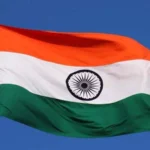Cricket, the enthralling game that stirs the emotions of millions, has expanded beyond its sports confines in India. It’s more than simply a sport; it’s a cultural phenomenon, a unifying force, and, for many, a quasi-religious experience. Cricket is the unifying thread that brings India together in a country noted for its rich tapestry of customs and beliefs.
This blog takes you on a trip through the heart and spirit of cricket in India, from its colonial beginnings to its contemporary role as a lasting cultural symbol. We’ll look at how cricket has shaped the Indian mindset, from its impact on culture and politics to the admiration of cricketing giants like Sachin Tendulkar.
Cricket’s Origin and Evolution in India
Cricket was introduced to India in the 18th century by British conquerors. English sailors in Gujarat played the first documented cricket match in India in 1721. The game, as well as cricket betting, quickly gained popularity among the upper classes and the native people, particularly the Parsi community in Bombay, who established the first Indian cricket club in 1848.
The game gained popularity when India gained independence in 1947. In 1926, India joined the International Cricket Council (ICC) and played its first Test match against England. In 1952, India won its first Test series against Pakistan, and in 1967, it won its first overseas series against New Zealand.
Sunil Gavaskar, Kapil Dev, Dilip Vengsarkar, and Ravi Shastri were among the legends of Indian cricket throughout the 1970s and 1980s. In 1983, India won its first World Cup, defeating the powerful West Indies in a dramatic final at Lord’s. India also won the Asia Cup in 1984 and the World Cricket Championship in 1985.
New stars emerged in the 1990s and 2000s, including Sachin Tendulkar, Rahul Dravid, Sourav Ganguly, Anil Kumble, Virender Sehwag, and Harbhajan Singh. India lost the World Cup final to Australia in 2003, but won the inaugural ICC World Twenty20 in 2007, defeating Pakistan in a dramatic match.
The current generation of Indian cricketers includes Virat Kohli, Rohit Sharma, MS Dhoni, Ravichandran Ashwin, Jasprit Bumrah, and Hardik Pandya. India won its second World Cup in 2011, defeating Sri Lanka at home. India also became the number-one ranked team in Test cricket in 2016 and 2019.
Cricket’s Impact on Indian Society
Cricket has had a significant effect on many elements of Indian life, ranging from politics to entertainment. Cricket matches bring people together from all walks of life and regions, instilling a feeling of national pride and identity. Cricket also reflects social and economic developments that have occurred in India throughout time.
Cricket has also helped to India’s economic progress. The Indian Premier League (IPL), which began in 2008, is one of the world’s most lucrative cricket competitions. It draws elite players from all around the globe and produces enormous cash from television rights, sponsorships, merchandise, and ticket sales. Many people interested in various facets of the game have found work as a result of the IPL.
Cricket as a Religion: The Sachin Tendulkar Era
One name that epitomizes cricket in India is Sachin Tendulkar. He is widely regarded as one of the greatest batsmen of all time and a national icon. He played for India from 1989 to 2013, scoring more than 34,000 runs and breaking several records in international cricket. He is the only player to score 100 centuries across all formats of the game.
Tendulkar’s career coincided with the emergence of India as a global power and an economic giant. He became a symbol of India’s aspirations and achievements, inspiring millions of people with his talent and dedication. He was also a role model for many young cricketers who followed in his footsteps.
Tendulkar’s fans worship him as a god of cricket. They celebrate his birthday, his milestones, and his victories with fervor and devotion. They also share his pain, his failures, and his retirement with tears and emotions. Tendulkar’s impact on Indian cricket and society is unparalleled and unmatched.
Cricket and Festivals: The IPL Extravaganza
The IPL is India’s largest cricket extravaganza. It is a T20 competition with eight franchise teams representing various locales. The IPL is played every year between March and May, coinciding with India’s festival season. The IPL blends cricket and entertainment to produce a spectacle that draws millions of spectators.
The IPL teams have grown inextricably linked to the local characteristics of the places they represent. Fans show their allegiance to their clubs by donning their colors and cheering on their players. The IPL matches are also a cultural exchange opportunity, as players from various nations and backgrounds connect and learn from one another.
Conclusion
Cricket is India’s cultural and religious sport. It is a game that has influenced India’s history, culture, and identity. It is a game that brings people together despite their differences and divisions. It is a game that stimulates hopes and dreams. It’s a game that celebrates life and happiness. Cricket is the beating heart of India.







